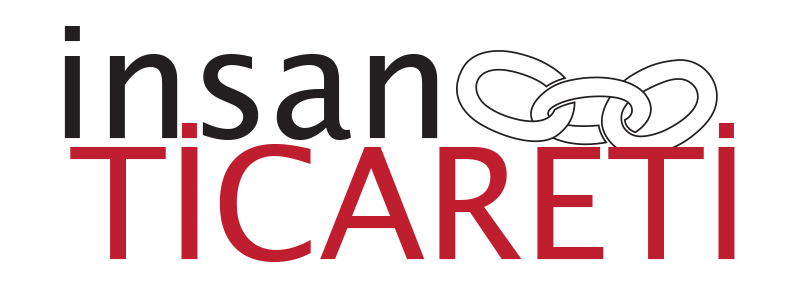Steps of Human Trafficking Crime
Share

When we look at the steps of human trafficking in general, action, means of action and purpose of action are seen as three basic elements.
ACTION
- Victimization/Engagement
- Transfer or transport of the victim
- Hosting the victim at the destination
- Delivery of the victim (receipt of persons)
TOOLS OF ACTION
- Tehdit Veya Kuvvet Kullanımı
- Zorlama
- Kaçırma
- Dolandırıcılık
- Aldatma
- Hassas durumun kötüye kullanılması
- Savunmasızlıktan yararlanma
- Mağdurun kontrolörü rolünde olan bir kişiye ödeme yapılması veya menfaat sağlanması
PURPOSE OF THE ACTION
- Exploitation and Abuse
In the action phase of human trafficking activities, victim finding/recruiting, transfer or transportation of the victim (transport/transfer), harboring and delivery (receipt of persons) steps.
The victim finding phase is deeply linked to the country of origin, the country of origin of potential victims. Criminal organizations prefer countries that will be a source of human trafficking. This preference is shaped according to some situations that the victims are exposed to. For example, in countries where gender roles emphasize the subordinate role in society to the detriment of women, women are more likely to be fit for trafficking activities due to the low employment opportunities for women. It is much easier to find victims during periods of economic crises, natural disasters, wars and internal conflicts. In this sense, different researchers give different classifications based on the methods used by human traffickers to find the victim. One of these classifications is the victimization of forced engagement, totally deceptive recruitment, and partial deceptive recruitment.
In forced engagement the victim is directly abducted, while the victim and the human trafficker have no previous ties. Forced engagement or abduction is the establishment of de facto power over the victim following the abduction, placing the victim in a position to be treated as an object that the perpetrator can displace, close, use, or have a master role over.
If partial engagement the victim will be provided with employment, but no information is given about what this will be and under what conditions. In some cases, traffickers also appear to reach out over the first victim to the victim’s environment. For a job that is said to exist abroad, the victim may be asked to invite his friends without knowing it yet. Likewise, the first victim may be asked to be sent to the country of origin under the threat and observation of human traffickers, and to make them victims by contacting other acquaintances or new people. The first victim may engage in this action to gain their freedom or become a link in a voluntary trafficking organisation. The term “happy human trafficking” is used for such activities in the United Nations literature. In this context, the first victim returns to the country of origin under threat or blackmail and creates a “happy illusion” against new victim candidates, telling that he has a legal job abroad and how good this job/life/earning is. Because of this illusion, the method is referred to as “happy human trafficking”. While this method reduces the risk to the main organizers and increases profits, it turns the first victim into a proxy recruiter and then into a human trafficker.
In totally deceptive engagement, the victim is promised direct employment or financial gain, and sometimes by making a down payment, and hiding real intentions comes to the fore. In this method, the “beloved” method is often used. When the victim enters into a love affair with someone in the target country, the promise of marriage or the real marriage is ensured. It is known that by these means, the victim is brought to the target country and after that, the victim is included in the human trafficking process mostly for sexual exploitation. There are also trap techniques based on social factors that are intended to deceive the victims, using the glitter of the purely deceptive method of engagement, activities such as music, fashion, entertainment or publicity. The victim is first deceived and then exposed to abuse by using front jobs such as modeling, travel or employment agencies, bartender/waitress/management in nightclubs, education consultancy, for which upfront or small payments can be made.
Means of action at the point of threat or use of force, debt, coercion, kidnapping, fraud, deception, abuse of vulnerability, vulnerability, or in the role of controller of the victim It is seen that the payment or benefit is provided to a person. In many cases, it is seen that the victim is placed in poor living conditions. Housing in unhealthy environments, malnutrition, low or zero wages, very long working hours, heavy, dangerous and unhealthy work can be given as examples of these conditions. This situation is used to provide a certain control over the victim as well as the nature of abuse.
ABSTRACT METHODS
- Women’s and girls’ marriage, prostitution or house, etc. the forced or persuasive recruitment of men and boys for war or other services
- Begging of children, snatching, pickpocketing, stealing,
- Employment of children in factories, workshops, agriculture or similar places,
- Forced marriage of girls for money or with family persuasion
- Forcing girls or boys into prostitution, either commercially or arbitrarily
- Forced prostitution of victims
- Forcing women to marry,
- Sale of children/babies to other families as adopted, by their own families or by traders
- Pushing victims, especially children, into the pornography industry
- Forced labor of men and women in factories, workshops, agricultural work or domestic service
- Illegal buying and selling of victims’ organs without their consent
Forced Labor / CONTROL METHODS
- Housing in poor conditions, unhealthy environments, starvation/malnutrition
- Very long working hours, heavy, dangerous, unhealthy work
- Low or zero fee
- Violence or threats of violence to victims
- Bondage by debit
- Seizure of documents (passport, ID, etc.)
- Isolation, imprisonment or surveillance
- incitement to crime through substance abuse
- Threat to report to law enforcement
- To use or threaten violence against the relatives or family of the victim
- Threatening to disclose prostitution, drug use or filming to the victim’s family and friends
- Forcing illegal activities
The purpose of the action is to obtain illegal income and commodities through transnational abuse and exploitation.

